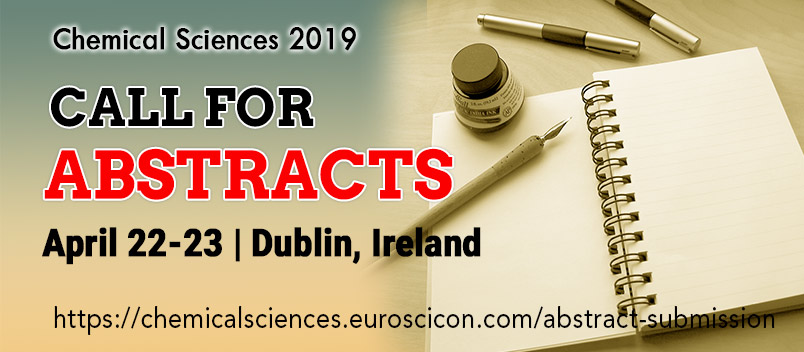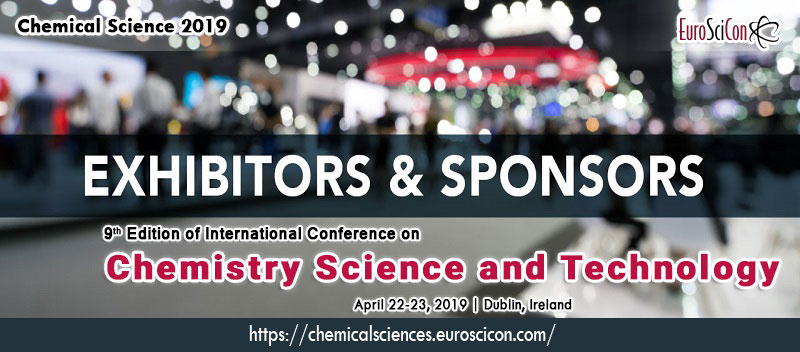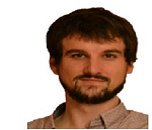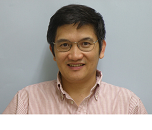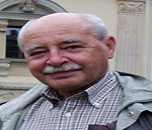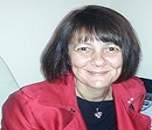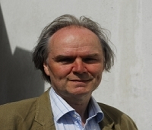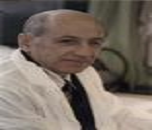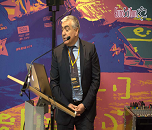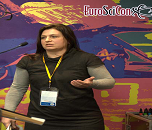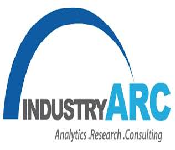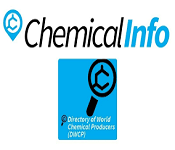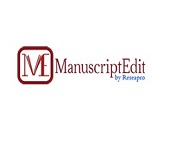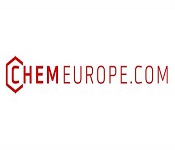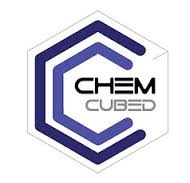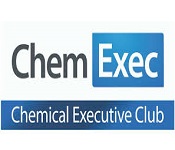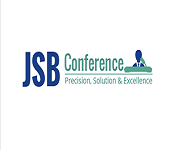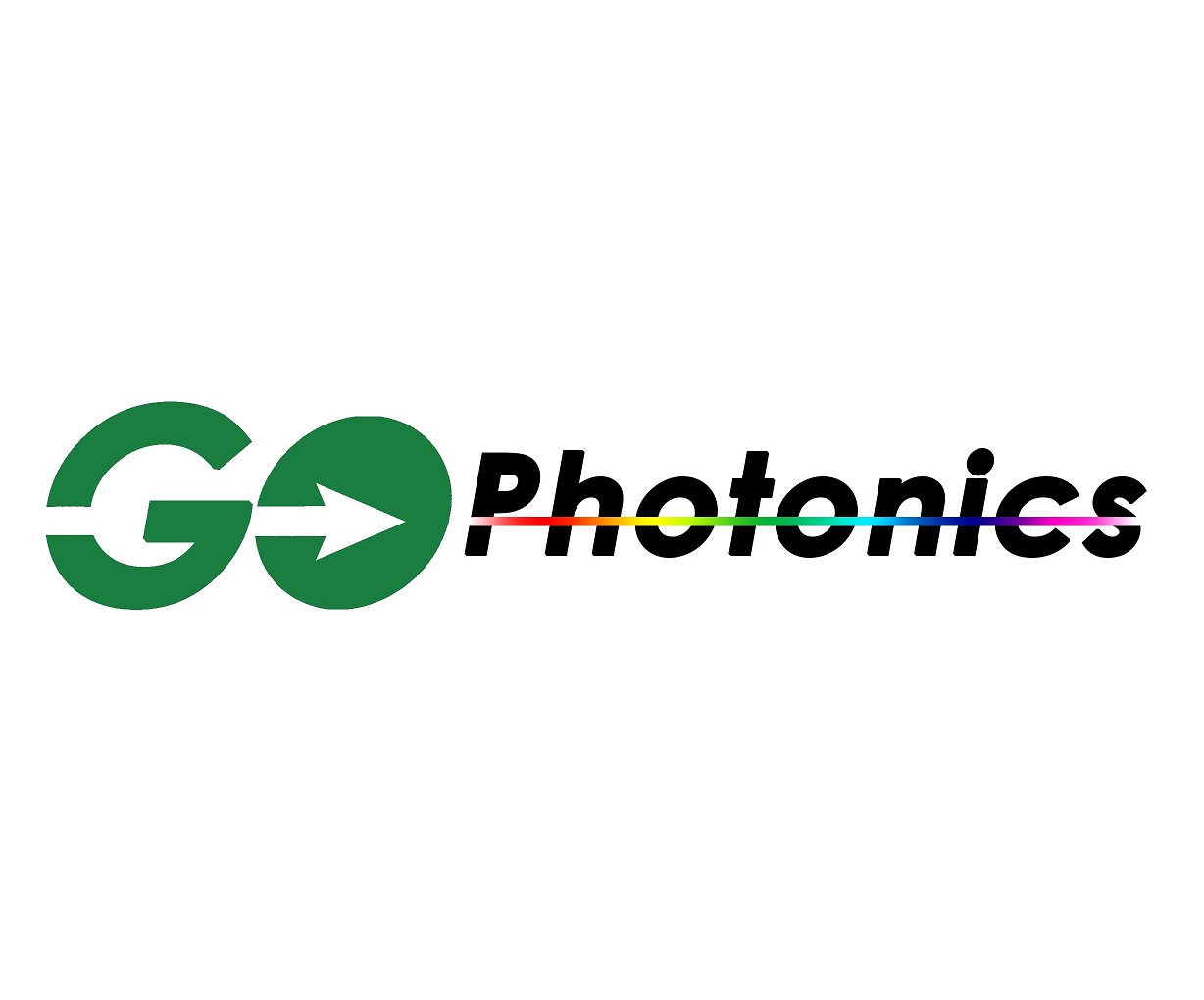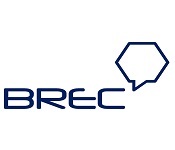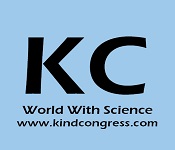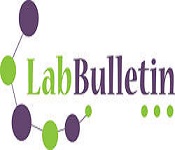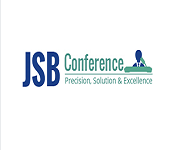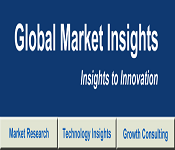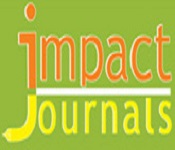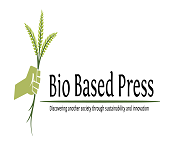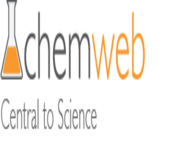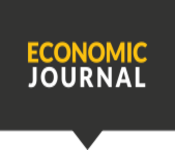Chemical Sciences 2019
About Conference
EuroSciCon invites all the participants from all over the world to attend "9th International Conference on Chemistry Sciences and Technology’’ during April 22-23, 2019 at Dublin, Ireland which includes speakers talk, speaker presentations on their work, oral talks (speaker forum and young research forum), poster presentations on unique scientific projects, interesting workshops and exhibitions.
Chemical sciences 2019 is a global overview the theme: “Recent Innovations in Chemistry Sciences research and applications of chemistry” is aims to bring together academic scientists, all researchers and research scholars to exchange and share their experiences and research results on all aspects of chemistry sciences. It also provides a international disciplinary platform for researchers professors, practitioners and educators to present their work and discuss the most recent innovations, trends, and concerns as well as tough practical challenges encountered, and solutions adopted in the fields of chemistry sciences technology.
Call for Contributions
All honorable Author are requested to contribute to and help shape the conference through submissions of their research or project abstracts, papers and e-posters. Also, their great research contributions describing the original and unexpected and unpublished results of constructive, conceptual, empirical most importantly experimental and theoretical work in all areas of chemistry sciences and technology are invited for presentation at the prestigious conference. The conference solicits contributions of new research abstracts, papers with new ideas and interbred work, e-posters that address the unique themes with great topics of the chemistry conference, including figures, tables and references of novel research materials.
Target Audience for Chemical Sciences 2019:
Eminent scientists/ research professors, junior/senior research fellows in the field of chemical sciences, interested students, directors of chemicals or chemistry related companies, members of chemistry associations, chemical engineers and exhibitors from chemicals industry/chemical industries, interested people from field of chemistry.
Why to attend our Conference:
Scope and importance: with the growing awareness and focus on improving and maintaining the environment, the regulatory visible impact on the chemical and medicinal market in which chemistry science is indulged has grown. Coatings, resins, gases, fuels, pesticides, cosmetics have all seen areas of growth on a global and segmented geographical scale. The bcc research reports have provided high quality chemical market forecasts and recent trends based on current studies and analysis of the market and the market managers. Patent analysis and company profiles of major players and stakeholders within the chemistry sciences market within the reports show emerging products of chemicals and technologies that are environmentally friendly which is very great achievement of researchers and in some cases, help sustain the environment. The areas covered range from commodity useful chemical products to smaller specialized and secure chemical markets. Chemistry is too universal and dynamically-changing a subject to be confined to a fixed definition, it might be better to think of chemistry more as a point of view that places its major focus on the structure and properties of substances kinds of matter and exceptionally on the changes that they undergo. The real importance of chemistry is that it serves as the interface to practically all the other life sciences, as well as to many other areas of human health and living organisms’ endeavor. For this reason, chemistry science is often said (at least by chemists!) to be like the "central science". Chemistry can be "central" in a much more personal way: with a solid and impactable background in chemistry field, you will defiantly find it far easier to migrate into other fields as your interests develop and interesting career. Chemistry is so deeply ingrained into different areas of business, and environmental management and government, that some background in the subject can be useful in fields as varied as product development, chemical marketing, management, computer science, technical writing, and even law. It also provides a great platform for chemistry researchers, scholars and educators to present and discuss the most special recent innovations, trends, practical challenges encountered and concerns the solutions adopted in the field of chemical science. The recent research in chemistry science shares knowledge to scholars pursing their studies in this field.
Sessions/Tracks
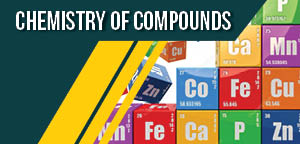
Track 1: Chemistry of compounds
Chemical compound is an entity consisting of two or more atoms, at least two from different chemical elements, which associate via chemical bonds. There are four types of compounds, depending on how the constituent atoms are held together: molecules held together by covalent bonds, ionic compounds held together by ionic bonds, intermetallic compounds held together by metallic bonds, and certain complexes held together by coordinate covalent bonds. Many chemical compounds have a unique numerical identifier assigned by the chemical abstracts service (CAS): its CAS number. A chemical formula is a way of expressing information about the proportions of atoms that constitute a particular chemical compound, using the standard abbreviations for the chemical elements, and subscripts to indicate the number of atoms involved. For example, water is composed of two hydrogen atoms bonded to one oxygen atom: the chemical formula is H2O.
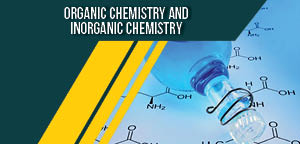
Track 2: Organic Chemistry and Inorganic Chemistry
Organic chemistry is a chemistry subdiscipline involving the scientific study of the structure, properties, and reactions of organic compounds and organic materials, i.e., matter in its various forms that contain carbon atoms. The study of organic reactions includes probing their scope through use in preparation of target compounds (e.g., natural products, drugs, polymers, etc.) by chemical synthesis, as well as the focused study of the reactivities of individual organic molecules, both in the laboratory and via theoretical (in silico) study. Inorganic chemistry deals with the synthesis and behavior of inorganic and organometallic compounds. This field covers all chemical compounds except the myriad organic compounds (carbon-based compounds, usually containing C-H bonds), which are the subjects of organic chemistry. It has applications in every aspect of the chemical industry, including catalysis, materials science, pigments, surfactants, coatings, medications, fuels, and agriculture.
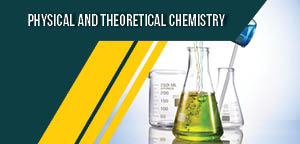
Track 3: Physical and Theoretical Chemistry
Physical chemistry is the study of macroscopic, atomic, subatomic and particulate phenomena in chemical systems in terms of the principles, practices and concepts of physics such as motion, energy, force, time, thermodynamics, quantum chemistry, statistical mechanics, analytical dynamics and chemical equilibrium. Physical chemistry, in contrast to chemical physics, is predominantly (but not always) a macroscopic or supra-molecular science, as the majority of the principles on which it was founded relate to the bulk rather than the molecular/atomic structure alone (for example, chemical equilibrium and colloids). Theoretical chemistry is a branch of chemistry, which develops theoretical generalizations that are part of the theoretical arsenal of modern chemistry, for example, the concept of chemical bonding, chemical reaction, valence, the surface of potential energy, molecular orbitals, orbital interactions, molecule activation etÑ. in recent years, it has consisted primarily of quantum chemistry.

Track 4: Heterocyclic Chemistry
Heterocyclic compound or ring structure is a cyclic compound that has atoms of at least two different elements as members of its ring (s). Heterocyclic chemistry is the branch of organic chemistry dealing with the synthesis, properties and applications of these heterocycles. Examples of heterocyclic compounds include all of the nucleic acids, the majority of drugs, most biomass (cellulose and related materials), and many natural and synthetic dyes. Heterocyclic compounds can be usefully classified based on their electronic structure. The saturated heterocycles behave like the acyclic derivatives. Thus, piperidine and tetrahydrofuran are conventional amines and ethers, with modified steric profiles. Therefore, the study of heterocyclic chemistry focuses especially on unsaturated derivatives, and the preponderance of work and applications involves unstrained 5- and 6-membered rings. Included are pyridine, thiophene, pyrrole, and furan.
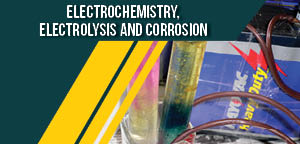
Track 5: Electrochemistry, Electrolysis and Corrosion
Electrochemistry is the branch of physical chemistry that studies the relationship between electricity, as a measurable and quantitative phenomenon, and identifiable chemical change, with either electricity considered an outcome of a particular chemical change or vice versa. These reactions involve electric charges moving between electrodes and an electrolyte (or ionic species in a solution). Thus electrochemistry deals with the interaction between electrical energy and chemical change. Electrochemistry has also important applications in the food industry, like the assessment of food/package interactions, the analysis of milk composition, the characterization and the determination of the freezing end-point of ice-cream mixes, the determination of free acidity in olive oil. he spontaneous redox reactions of a conventional battery produce electricity through the different chemical potentials of the cathode and anode in the electrolyte. Electrolysis requires an external source of electrical energy to induce a chemical reaction, and this process takes place in a compartment called an electrolytic cell. There are various extremely important electrochemical processes in both nature and industry, like the coating of objects with metals or metal oxides through electrodeposition and the detection of alcohol in drunken drivers through the redox reaction of ethanol. Corrosion is an electrochemical process, which reveals itself in rust or tarnish on metals like iron or copper and their respective alloys, steel and brass. Attempts to save a metal from becoming anodic are of two general types. Anodic regions dissolve and destroy the structural integrity of the metal. While it is almost impossible to prevent anode/cathode formation, if a non-conducting material covers the metal, contact with the electrolyte is not possible and corrosion will not occur. Corrosion can be prevented by coating, sacrificial anodes.
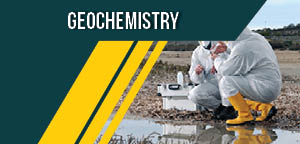
Track 6: Geochemistry
Geochemistry is the science that uses the tools and principles of chemistry to explain the mechanisms behind major geological systems such as the Earth's crust and its oceans. The realm of geochemistry extends beyond the Earth, encompassing the entire Solar System Some subsets of geochemistry are: Isotope geochemistry involves the determination of the relative and absolute concentrations of the elements and their isotopes in the earth and on earth's surface. Biogeochemistry is the field of study focusing on the effect of life on the chemistry of the earth. Organic geochemistry involves the study of the role of processes and compounds that are derived from living or once-living organisms.
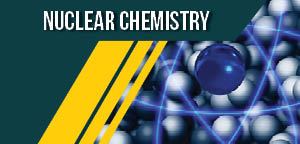
Track 7: Nuclear Chemistry/Radiochemistry
Nuclear chemistry is the subfield of chemistry dealing with radioactivity, nuclear processes, such as nuclear transmutation and nuclear properties. It is the chemistry of radioactive elements such as the actinides, radium and radon together with the chemistry associated with equipment (such as nuclear reactors) which are designed to perform nuclear processes. This includes the corrosion of surfaces and the behavior under conditions of both normal and abnormal operation (such as during an accident). An important area is the behavior of objects and materials after being placed into a nuclear waste storage or disposal site. As a result, nuclear chemistry greatly assists the understanding of medical treatments (such as cancer radiotherapy) and has enabled these treatments to improve. Radiochemistry is the chemistry of radioactive materials, where radioactive isotopes of elements are used to study the properties and chemical reactions of non-radioactive isotopes (often within radiochemistry the absence of radioactivity leads to a substance being described as being inactive as the isotopes are stable). Radiochemistry includes the study of the behavior of radioisotopes in the environment; for instance, a forest or grass fire can make radioisotopes become mobile again. One biological application is the study of DNA using radioactive phosphorus-32. In these experiments stable phosphorus is replaced by the chemical identical radioactive P-32, and the resulting radioactivity is used in analysis of the molecules and their behavior.
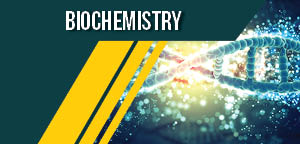
Track 8: Biochemistry
Biochemistry sometimes called biological chemistry is the study of chemical processes within and relating to living organisms. By controlling information flow through biochemical signaling and the flow of chemical energy through metabolism, biochemical processes give rise to the complexity of life. Biochemistry is closely related to molecular biology. The mechanisms by which cells harness energy from their environment via chemical reactions are known as metabolism. The findings of biochemistry are applied primarily in medicine, nutrition, and agriculture. In medicine, biochemists investigate the causes and cures of diseases. In nutrition, they study how to maintain health and study the effects of nutritional deficiencies. In agriculture, biochemists investigate soil and fertilizers, and try to discover ways to improve crop cultivation, crop storage and pest control.
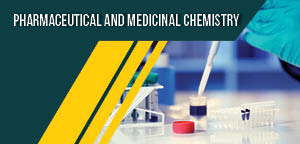
Track 9: Pharmaceutical/Medicinal Chemistry
Medicinal chemistry and pharmaceutical chemistry are disciplines at the intersection of chemistry, especially synthetic organic chemistry, and pharmacology and various other biological specialties, where they are involved with design, chemical synthesis and development for market of pharmaceutical agents, or bio-active molecules (drugs). In particular, medicinal chemistry in its most common practice-focusing on small organic molecules-encompasses synthetic organic chemistry and aspects of natural products and computational chemistry in close combination with chemical biology, enzymology and structural biology, together aiming at the discovery and development of new therapeutic agents. At the biological interface, medicinal chemistry combines to form a set of highly interdisciplinary sciences, setting its organic, physical, and computational emphases alongside biological areas such as biochemistry, molecular biology, pharmacognosy and pharmacology, toxicology and veterinary and human medicine, these with project management, statistics and pharmaceutical business practices.
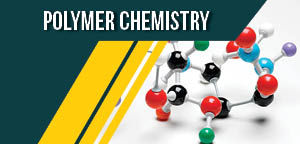
Track 10: Polymer Chemistry
Polymer chemistry is a chemistry subdiscipline that deals with the structures, chemical synthesis and properties of polymers, primarily synthetic polymers such as plastics and elastomers. Polymer chemistry is related to the broader field of polymer science, which also encompasses polymer physics and polymer engineering. The chemist Hermann Staudinger first proposed that polymers consisted of long chains of atoms held together by covalent bonds, which he called macromolecules. His work expanded the chemical understanding of polymers and was followed by an expansion of the field of polymer chemistry during which such polymeric materials as neoprene, nylon and polyester were invented. Polymers are high molecular mass compounds formed by polymerization of monomers. The simple reactive molecule from which the repeating structural units of a polymer are derived is called a monomer. A polymer is chemically described by its degree of polymerization, molar mass distribution, tacti city, copolymer distribution, the degree of branching, by its end-groups, crosslinks, crystallinity and thermal properties such as its glass transition temperature and melting temperature. Polymers in solution have special characteristics with respect to solubility, viscosity and gelation.
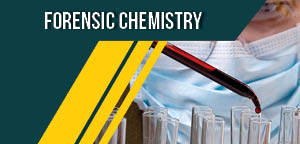
Track 11: Forensic Chemistry
Forensic chemistry is the application of chemistry and its subfield, forensic toxicology in a legal setting. A forensic chemist can assist in the identification of unknown materials found at a crime scene. Specialists in this field have a wide array of methods and instruments to help identify unknown substances. These include high-performance liquid chromatography, gas chromatography-mass spectrometry, atomic absorption spectroscopy, Fourier transform infrared spectroscopy, and thin layer chromatography. One of the most important advancements in forensic chemistry came in 1955 with the invention of gas chromatography-mass spectrometry (GC-MS) by Fred McCafferty and Roland Gothlike.
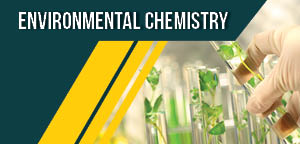
Track 12: Environmental Chemistry
Environmental chemistry is the scientific study of the chemical and biochemical phenomena that occur in natural places. It should not be confused with green chemistry, which seeks to reduce potential pollution at its source. It can be defined as the study of the sources, reactions, transport, effects, and fates of chemical species in the air, soil, and water environments; and the effect of human activity and biological activity on these. Environmental chemistry is an interdisciplinary science that includes atmospheric, aquatic and soil chemistry, as well as heavily relying on analytical chemistry and being related to environmental and other areas of science. Environmental chemists draw on a range of concepts from chemistry and various environmental sciences to assist in their study of what is happening to a chemical species in the environment. Important general concepts from chemistry include understanding chemical reactions and equations, solutions, units, sampling, and analytical techniques.

Track 13: Bio Based Chemistry
Bioorganic chemistry is a rapidly growing scientific discipline that combines organic chemistry and biochemistry. While biochemistry aims at understanding biological processes using chemistry, bioorganic chemistry attempts to expand organic-chemical researches (that is, structures, synthesis, and kinetics) toward biology. When investigating metalloenzymes and cofactors, bioorganic chemistry overlaps bioinorganic chemistry. Biophysical organic chemistry is a term used when attempting to describe intimate details of molecular recognition by bioorganic chemistry. Bioorganic chemistry is that branch of life science that deals with the study of biological processes using chemical methods.
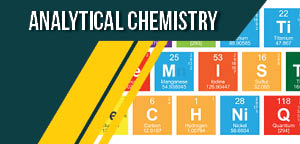
Track 14: Analytical Chemistry
Analytical chemistry studies and uses instruments and methods used to separate, identify, and quantify matter. In practice separation, identification or quantification may constitute the entire analysis or be combined with another method. Separation isolates analytes. Qualitative analysis identifies analytes, while quantitative analysis determines the numerical amount or concentration. Analytical chemistry consists of classical, wet chemical methods and modern, instrumental methods. Classical qualitative methods use separations such as precipitation, extraction, and distillation. Identification may be based on differences in color, odor, melting point, boiling point, radioactivity or reactivity. Classical quantitative analysis uses mass or volume changes to quantify amount. Instrumental methods may be used to separate samples using chromatography, electrophoresis or field flow fractionation. Then qualitative and quantitative analysis can be performed, often with the same instrument and may use light interaction, heat interaction, electric fields or magnetic fields . Often the same instrument can separate, identify and quantify an analyte. Analytical chemistry is also focused on improvements in experimental design, chemometrics, and the creation of new measurement tools. Analytical chemistry has broad applications to forensics, medicine, science and engineering.

Track 15: Advancing the Chemical and Biological Engineering Fundamentals
Chemical engineering is a branch of engineering that applies physical sciences (physics and chemistry), life sciences (micro biology and biochemistry), together with applied mathematics and economics to produce, transform, transport, and properly use chemicals, materials and energy. A chemical engineer designs large-scale processes that convert chemicals, raw materials, living cells, microorganisms and energy into useful forms and products. Advancements in computer science found applications designing and managing plants, simplifying calculations and drawings that previously had to be done manually. The completion of the Human Genome Project is also seen as a major development, not only advancing chemical engineering but genetic engineering and genomics as well. Chemical engineering principles were used to produce DNA sequences in large quantities. Using engineering's own analytical and synthetic methodologies and also its traditional sensitivity to the cost and practicality of the solution (s) arrived. Industrial bio-engineering extends from the creation of artificial organs by technical means or finds ways of growing organs and tissues through the methods of regenerative medicine to compensate reduced or lost physiological functions (Biomedical Engineering) and to develop genetically modified organisms, i.e., agricultural plants and animals as well as the molecular designs of compounds with desired properties (protein engineering, engineering enzymology). In the non-medical aspects of bio-engineering, it is closely related to biotechnology, nanotechnology.
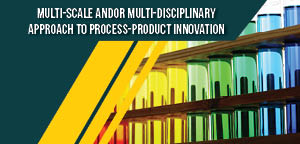
Track 16: Multi-scale and/or Multi-disciplinary Approach to Process-Product Innovation
Product Innovation is the creation and subsequent introduction of a good or service that is either new, or an improved version of previous goods or services. This is broader than the normally accepted definition of innovation that includes the invention of new products which, in this context, are still considered innovative. Development of new products, changes in design of established products or use of new materials or components in the manufacture of established products. Numerous examples of product innovation include introducing new products, enhanced quality and improving its overall performance. Product innovation, alongside cost-cutting innovation and process innovation are three different classifications of innovation which aim to develop a company's production methods. Thus product innovation can be divided into two categories of innovation: radical innovation which aims at developing a new product, and incremental innovation which aims at improving existing products.

Track 17: Sustainable Process-Product Development through Green Chemistry
Green chemistry, also called sustainable chemistry, is an area of chemistry and chemical engineering focused on the designing of products and processes that minimize the use and generation of hazardous substances. Whereas environmental chemistry focuses on the effects of polluting chemicals on nature, green chemistry focuses on technological approaches to preventing pollution and reducing consumption of nonrenewable resources. Green chemistry overlaps with all subdisciplines of chemistry but with a particular focus on chemical synthesis, process chemistry, and chemical engineering, in industrial applications. To a lesser extent, the principles of green chemistry also affect laboratory practices. The overarching goals of green chemistry-namely, more resource-efficient and inherently safer design of molecules, materials, products.

Track 18: Systematic Methods and Tools for Managing the Complexity
The complexity of medical problems is a well-recognized phenomenon. In the presence of economic and cultural restrictions, medical decision-making can be particularly challenging. This paper outlines a system of analysis and decision-making for solving such problems, and briefly describes a case study in which the method was used to analyze the case of antibiotic overprescribing in a large health maintenance organization. The purpose of the study was to determine if a technique for problem-solving in the field of engineering could be applied to the complex problems facing primary care. The method is designated Systematic Inventive Thinking and consists of a three-step procedure: problem reformulation, general search-strategy selection and an application of idea-provoking techniques. The problem examined is the over-prescribing of antibiotics by general practitioners working in Maccabi Healthcare Services, an HMO serving one and a half million patients in Israel. The group of healthcare professionals involved in the discussions generated 117 ideas for improving antibiotic use. Six of these ideas were then implemented in a national campaign in the winter of 2000/1 and 2001/2. During this period, a significant reduction in per-visit antibiotic purchasing was observed for influenza visits (from 79.2 per 1,000 to 58.1 per 1,000, P < 0.0001), but not for other categories of visits. The SIT methodology is a useful technique for problem-solving and idea generation within the medical framework.
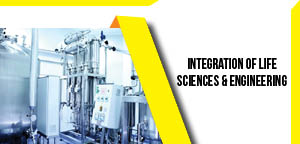
Track 19: Integration of Life Sciences & Engineering
System integration is defined in engineering as the process of bringing together the component sub-systems into one system (an aggregation of subsystems cooperating so that the system is able to deliver the overarching functionality) and ensuring that the subsystems function together as a system. The list of life sciences comprise the branches of science that involve the scientific study of living organisms such as microorganisms, plants, animals, and human beings as well as related considerations like bioethics. While biology remains the centerpiece of the life sciences, technological advances in molecular biology and biotechnology have led to a burgeoning of specializations and interdisciplinary fields. Some life sciences focus on a specific type of life. For example, zoology is the study of animals, while botany is the study of plants. Other life sciences focus on aspects common to all or many life forms, such as anatomy and genetics. Yet other fields are interested in technological advances involving living things, such as bio engineering. Another major, though more specific, branch of life sciences involves understanding the mind neuroscience.
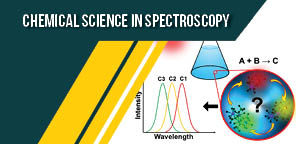
Track 20: Chemical Science in Spectroscopy
Spectroscopy is the study of the interaction between matter and electromagnetic radiation. Historically, spectroscopy originated through the study of visible light dispersed according to its wavelength, by a prism. Later the concept was expanded greatly to include any interaction with radiative energy as a function of its wavelength or frequency. Spectroscopic data are often represented by an emission spectrum, a plot of the response of interest as a function of wavelength or frequency. Atomic spectroscopy was the first application of spectroscopy developed. Atomic absorption spectroscopy and atomic emission spectroscopy involve visible and ultraviolet light. These absorptions and emissions, often referred to as atomic spectral lines, are due to electronic transitions of outer shell electrons as they rise and fall from one electron orbit to another. Atoms also have distinct x-ray spectra that are attributable to the excitation of inner shell electrons to excited states.
Market Analysis
Information provided is the chemical science analyses of global market trends, with data from 2014 estimates for 2015 and 2016 and projections of CAGRs through 2021. Discussion of the markets by end-use application and major types of materials used, covering all the major ingredients. Evaluation of new patents and technological developments. Identification of companies potentially involved in mergers and acquisitions. Determinations of the sales potential for new formulations. Examinations of various regulatory and environmental issues as new ingredients are introduced. Comprehensive profiles of major end-user companies, along with their shares of the markets in their respective segments of operation. The chemicals market consists of specialty chemicals, commodity chemicals, agricultural chemicals, and other chemicals (which includes products such as pharmaceutical chemicals).
Market values are taken at producer selling price (PSP). The global chemicals market is expected to generate total revenues of $4,378.7bn in 2016, representing a compound annual growth rate (CAGR) of 3.9% between 2012 and 2016.The performance of the market is forecast to follow a similar pattern with an anticipated CAGR of 3.8% for the five-year period 2016 - 2021.
Global chemicals industry profile provides top-line qualitative and quantitative summary information including: market size (value 2012-16 and forecast to 2021). The profile also contains descriptions of the leading players including key financial metrics and analysis of competitive pressures within the market. Essential resource for top-line data and analysis covering the global chemicals market. Includes market size and segmentation data, textual and graphical analysis of market growth trends and leading companies. The chemicals market consists of specialty chemicals, commodity chemicals, agricultural chemicals, and other chemicals (which includes products such as pharmaceutical chemicals). Market values are taken at producer selling price (PSP). Any currency conversions used in the creation of this report have been calculated using constant 2015 annual average exchange rates. The global chemicals market is expected to generate total revenues of $4,378.7bn in 2016, representing a compound annual growth rate (CAGR) of 3.9% between 2012 and 2016. Commodity chemicals dominate the global market. The prevalence of commodity chemical production is common across the globe as they are typically low-cost and low-skill to produce, however increasing technology and chemical expertise fueled by increasing investment has resulted in the sustained growth of specialty chemicals. The performance of the market is forecast to follow a similar pattern with an anticipated CAGR of 3.8% for the five-year period 2016 - 2021. Scope: Save time carrying out entry-level research by identifying the size, growth, major segments, and leading players in the global chemicals market. Use the Five Forces analysis to determine the competitive intensity and therefore attractiveness of the global chemicals market. Leading company profiles reveal details of key chemicals market players' global operations and financial performance. Add weight to presentations and pitches by understanding the future growth prospects of the global chemicals market with five-year forecasts.
Learn More
LEARN MORE
Top Chemical Sciences Universities :
Chemical Sciences Universities :
University of Maryland |University College London | University of Minnesota | Imperial college of London | Chemistry Conferences 2019 | Oregon State University | University of Lowa Wake | Forest University | Physical Chemistry Conferences | Theoretical Chemistry Conference | Green Chemistry Conferences | Penn State College | EuroSciCon Conferences | Boston University | Medicinal Chemistry Conferences | Trinity College | Environmental Chemistry Conferences | Hunter College | Polymer Chemistry Conferences | King College Old Dominion University | Medicinal Chemistry Conferences |University of Calcutta | University of Exeter | Baylor College | University of Leicester | Chemistry Conferences 2019 | Analytical Chemistry Conferences | University Of Montana | Theoretical Chemistry Conferences | Swansea University | Environmental Chemistry Conferences | EuroSciCon Conferences | Polymer Chemistry Conferences | Green Chemistry Conferences | Lycoming Colleges |Organic Chemistry Conferences | Chemistry Conferences 2019 | University of California | Polymer Chemistry Conferences | Physical Chemistry Conferences | Nuclear Chemistry Conferences | UCD Science Centre Skaggs the School of Pharmacy | EuroSciCon Conferences | Environmental Chemistry Conferences | The University of Houston | Theoretical Chemistry Conferences | Biyani Colleges | University of Cambridge | Chemistry Conferences 2019 | EuroSciCon | University Of Kentucky | EuroSciCon | University of Vermont | Medicinal Chemistry Conferences | Petro Chemistry Conferences | Physical Chemistry Conferences | University of Michigan Ann Arbor | Jilin University | Green Chemistry Conferences | Nankai University | Environmental Chemistry Conferences | University of Toronto | Polymer Chemistry Conferences | Tohoku University | Princeton University | EuroSciCon | University of North Carolina Chapel Hill | Petro Chemistry Conferences | Chemistry Conferences 2019 | Theoretical Chemistry Conferences | University of Minnesota Twin Cities | Polymer Chemistry Conferences | National Taiwan University | EuroSciCon Conferences | University of Pennsylvania | Seoul National University | Chemistry Conferences 2019 | Cornell University | University of California San Diego | Green Chemistry Conferences
Europe Chemical Sciences Universities:
University of Graz | University of Innsbruck | Montan University Leoben | Johannes Kepler University Linz | Nuclear Chemistry Conferences |Ghent University | Ruaer Boskovia Institute | University of Split | Environmental Chemistry Conferences | University of Zagreb | Theoretical Chemistry Conferences | Charles University | Polymer Chemistry Conferences | Palacky University | University of Pardubice | | Aalto University | University of Grenoble | Environmental Chemistry Conferences | Green Chemistry Conferences | Environmental Chemistry Conferences | Medicinal Chemistry Conferences | IRCOF Institute for Research in Organic Fine Chemistry | Nuclear Chemistry Conferences | Theoretical Chemistry Conferences | National Graduate School of Engineering Chemistry | Lille University | Materials Chemistry Conferences Physical Chemistry Conferences | University of Lyon | University of Oviedo | Chemistry Conferences 2019 | University of Santiago de Compostela | Gree
Past Conference Report
Past Conference Report
Chemical Sciences 2018 Report
The 8th Edition of International Conference on Chemical Sciences was held on June 14-15, 2018 in London, UK with the presence of professional researchers, scientists involved in the development of high-quality education & research in all aspects.
Chemical Sciences 2018 witnessed an amalgamation of peerless speakers who enlightened the crowd with their knowledge and confabulated on various topics related to the field of Chemical Sciences and Chemistry. The highly exalted conference hosted by EuroSciCon was marked with the attendance of renowned and brilliant researchers, business delegates and talented student communities representing more than 20 countries around the world. The conference has tried grounding every aspect related to Chemical Sciences, covering all the possible research areas.
The conference aimed a parallel rail with theme “Recent Trends and Advancements in the Field of Chemical Sciences”. The meeting engrossed a vicinity of cognizant discussions on advancements in the field of Chemical Sciences, Physical and Theoretical Chemistry Chemistry of Compounds, Environmental Chemistry, Geochemistry, Electrochemistry Nanochemistry, Environmental Chemistry, Nuclear Chemistry, Radiochemistry, Polymer Chemistry, Organic Chemistry, Inorganic Chemistry, Material Chemistry, Electrolysis and Corrosion, Biochemistry, Pharmaceutical Chemistry, Analytical Chemistry, Bio Based Chemistry, Heterocyclic Chemistry, Multi-scale and Multi-disciplinary Approach to Process-Product Innovation, Sustainable Process-Product Development through Green Chemistry
The two days event implanted a firm relation of upcoming strategies in the field of Chemical Sciences with the scientific community. The conceptual and applicable knowledge shared, will also foster organizational collaborations to nurture scientific accelerations.
We are thankful to all our speakers for encouraging and supporting us to conduct the conference and catapulting the same to pinnacle of success.
The Organizing Committee would like to thank the moderator Vanja Subotic, Graz University of Technology, Austria for her valuable contribution which resulted in smooth functioning of the conference.
We would also like to thank our Poster judge Makhapa Makhafola, Mintek, South Africa for the evaluation of Poster Presentations.
The meeting was embarked with an opening ceremony followed by Keynote Sessions and followed by series of lectures delivered by Honourable Guests and members of the Keynote forum. The highlights of the meeting were the eponymous lectures, delivered by:
Eugenio Avila Pedrozo, Federal University of Rio Grande do Sul, Brazil
Muhammad Ali Theyab, Ministry of Higher Education and Scientific Research, UK
Jean-Pierre E Grolier, Institut de Chimie de Clermont-Ferrand, France
Jun Ichi Kadokawa, Kagoshima University, Japan
Takashiro Akitsu University of Science, Japan
Xiaoqin Nie, Southwest University of Science and Technology, China
Hui He, South China University of Technology, China
Hanen Bessaies, Tunis El Manar University, Tunisia
Harish Kumar Chopra, Sant Longowal Institute of Engineering and Technology, India
Gurunath Ramanathan, Indian Institute of Technology Kanpur, India
Tarique Nazmus Sadat, Bangladesh University of Engineering & Technology, Bangladesh
Feroz Alam, Advanced Design Concept, Bangladesh
All of them provided their fruitful contributions in the form of highly informative presentations and made the conference a top notch one.
EuroSciCon is prerogative to thank the Organizing Committee Members, Keynote speakers and Chairs on transcribing the plenary sessions and workshop in a diversified and variegate manner to make this conference an enviable artefact.
Chemical Sciences 2018 would not have reached the pinnacle if not with the support of International, multi-professional steering committee and coordination of Archives in Chemical Research, Der Chemica Sinica and Synthesis and Catalysis.
With the grand success of Chemical Sciences 2018, we are glad to announce our next upcoming conference “9th Edition of International Conference on Chemical Sciences” which is going to be held in Dublin, Ireland during April 22-23, 2019.
Bookmark your dates…
Hoping to meet you again coming year at Dublin!!!


